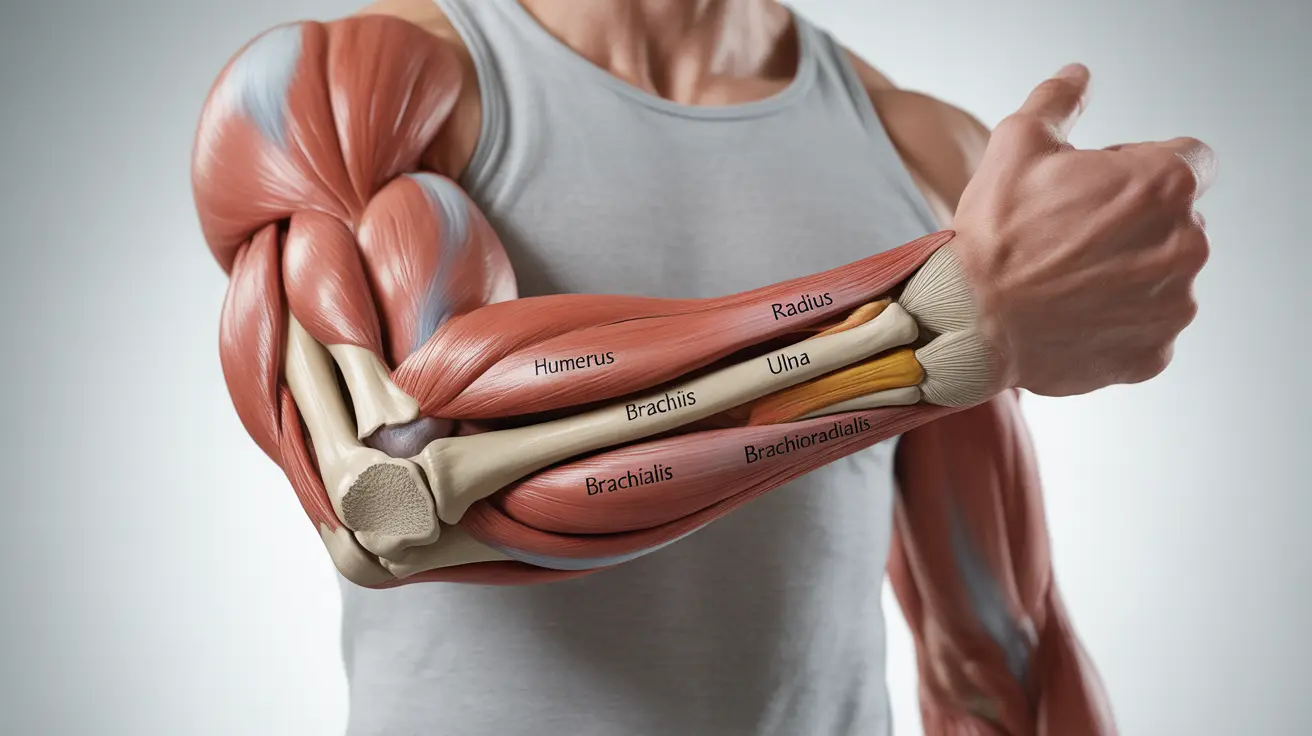Elbow flexion, the action of bending your elbow joint, is a fundamental movement we perform countless times throughout the day. Whether you're lifting a cup of coffee, exercising, or reaching for objects, proper elbow flexion is essential for daily activities. Understanding the mechanics of elbow flexion, common issues that can affect it, and ways to maintain or improve this movement can help you better care for your joint health.
When problems with elbow flexion arise, they can significantly impact your quality of life and ability to perform routine tasks. This comprehensive guide will explore the causes of elbow flexion problems, treatment options, and exercises that can help maintain or restore proper elbow function.
Understanding Elbow Flexion Mechanics
The elbow joint is a complex structure that relies on several key components working together harmoniously. The primary muscles involved in elbow flexion include the biceps brachii, brachialis, and brachioradialis. These muscles work in coordination with tendons, ligaments, and the joint capsule to create smooth, pain-free movement.
Key Anatomical Components
The main structures involved in elbow flexion include:
- The humerus (upper arm bone)
- The radius and ulna (forearm bones)
- Biceps brachii muscle
- Brachialis muscle
- Brachioradialis muscle
- Various supporting ligaments and tendons
Common Causes of Elbow Flexion Problems
Several conditions can affect your ability to bend your elbow properly:
- Tennis elbow (lateral epicondylitis)
- Golfer's elbow (medial epicondylitis)
- Arthritis
- Muscle strains or tears
- Tendinitis
- Post-injury stiffness
- Nerve compression or injury
Treatment and Recovery Options
Treatment for elbow flexion issues typically depends on the underlying cause. Common approaches include:
Conservative Treatment
Initial treatment often involves:
- Rest and activity modification
- Ice or heat therapy
- Anti-inflammatory medications
- Gentle stretching exercises
- Physical therapy
- Compression sleeves or braces
Medical Interventions
For more severe cases, medical treatments may include:
- Corticosteroid injections
- Platelet-rich plasma therapy
- Physical therapy
- Surgery (in severe cases)
Rehabilitation Exercises
Proper rehabilitation exercises can help improve elbow flexion and prevent future problems. Always consult with a healthcare provider before starting any exercise program, especially if you're experiencing pain or limited movement.
Basic Exercises
Some beneficial exercises include:
- Gentle elbow bends
- Isometric biceps contractions
- Wrist flexor and extensor stretches
- Resistance band exercises
- Progressive weight training
Frequently Asked Questions
What are the common causes of pain or limited movement during elbow flexion?
Common causes include tennis elbow, golfer's elbow, arthritis, muscle strains, tendinitis, and post-injury stiffness. Overuse injuries and poor ergonomics can also contribute to elbow flexion problems.
How can I improve elbow flexion range of motion after an injury?
Improvement typically involves a combination of gentle stretching exercises, physical therapy, proper rest, and gradual strengthening exercises. Following your healthcare provider's guidance and maintaining consistency with prescribed exercises is crucial for recovery.
What muscles are involved in bending the elbow, and how do they work together?
The primary muscles involved are the biceps brachii, brachialis, and brachioradialis. These muscles work together to create smooth elbow flexion, with the brachialis being the primary elbow flexor and the biceps brachii assisting while also helping with forearm supination.
When should I see a doctor for persistent difficulty or pain with elbow flexion?
Seek medical attention if you experience severe pain, significant limitation in movement, swelling that doesn't improve with rest, or symptoms that persist for more than a few weeks. Immediate medical attention is necessary if you hear a popping sound accompanied by pain or if you cannot bend or straighten your elbow.
What are effective physical therapy exercises to restore strength and flexibility in elbow flexion?
Effective exercises include gentle stretching, progressive resistance training with bands or weights, isometric exercises, and specific movements designed to improve range of motion. A physical therapist can provide a customized exercise program based on your specific condition and needs.




